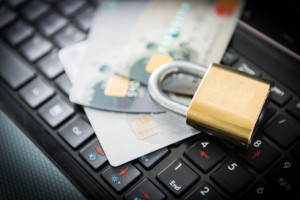Identity Theft Protection Tools You Should Offer Your Clients

According to the Bureau of Justice Statistics, 17.6 million U.S. residents were affected by identity theft in 2014 — the latest statistics available. That’s about 7% of all people over the age of 16. There’s a good chance that your customers may face identity theft at some point; to protect them, you need the right identity theft protection and detection tools.
Encryption for Online Banking
Online banking is essential, and most banking customers expect this service. But to keep your customer’s details as safe as possible, you need to ensure that you have encryption tools in place. When your customers log-into their accounts, their username and password should be encrypted, as well as any information they access.
While the technology behind encryption is complicated, the premise is simple. Encryption changes information into a secret code that can’t be easily hacked, and it can be applied to information that is being transmitted or stored.
Dual-Factor Authentication
Dual-factor authentication is when you require customers to enter two pieces of data to verify their identity. With online banking, you may want to set up the system to trigger dual-factor authentication when a customer is signing in from a new IP address. Basically, after they enter their username and password, your online banking service generates a pop-up requesting more information. At that point, your system sends a passcode to the email address or cell phone number on file. To access their account, your customer needs to enter the code.
You should also consider dual factor authentication for in-person transactions. In addition to having customers show their IDs to the teller, you may want them to verify their identity by running their ATM card and entering the PIN. If they don’t have their card, you may want to ask questions such as what the amount of your last deposit was, what’s your balance, or other details.
Session Timeouts
In the realm of online security, make sure that your system automatically times out when there’s no activity. That way, if one of your customers looks at their account on a computer at the library, work, or another public place and they forget to sign out, the system automatically signs them out.
Security Alerts
Ideally, you should set up your electronic banking system so that it can send automatic alerts to your customers. Depending on your preferences, you can set the criteria for alerts or your customers can opt in to various alerts. When the account balance falls below a certain point, when there are transactions over a certain amount, or when unusual activity occurs, your customers should receive an alert.
Security alerts don’t prevent identity theft, but they warn your customers that someone may be using their account. The sooner they know, the sooner they can take action and prevent the situation from getting worse.
Credit Monitoring
Consider offering free credit monitoring. These services monitor consumer credit reports, and they let consumers know when new credit inquiries have been received or accounts have been opened in their names. Again, this tool doesn’t necessarily stop identity theft, but it does ensure that your customers know about the issue quickly, so they can prevent it from snowballing.
Credit monitoring can be expensive, which is why many banks don’t offer it proactively. Rather, they offer it after a breach. To make your financial institution stand out from the competition, you may want to consider offering it to all your customers or to customers who hold one of your high value checking accounts. Services such as this can really help to foster your position as a relationship bank.
Education About Identity Theft
Make your customers partners in their own protection by educating them about the risks of identity theft. Consider offering a monthly identity protection newsletter that includes tips, tricks, and information about new scams. For instance, you could devote a newsletter to the importance of checking your credit report, and you could give your customers a step-by-step on how to check their credit for free.
In lieu of a newsletter, you may want to offer educational events. To boost exposure for your bank, you may want to open these classes to the community at large rather than just your clients. Consider doing short lectures on how to avoid phishing scams, how to spot social media scams, and how to protect your account.
Identity theft protection needs to be multi-pronged. Credit monitoring and account alerts let your customers know when their identities may have been breached, while tech essentials such as encryption and dual-factor authentication work to prevent identity theft from happening. Finally, education guides your customers in the right direction. At SQN Banking Systems, we offer a variety of fraud protection tools that can protect your customers and your bank. Contact us today to talk about how our products can benefit you.
